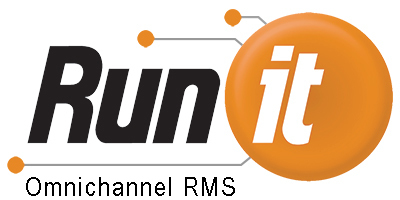“Analytics” is more than just a buzzword. Analytics help retailers strategize when it comes to inventory management, promotion of best sellers, store layout optimizations, and more.
Investing in analytics can give retailers access to dashboards where they can quickly view key corporate metrics, sales analysis reports, and staff performance reports to ensure that each store is optimized for success.
Corporate Dashboards for Insights
Corporate dashboards enable retail managers to view in-store analytics quickly and efficiently, easily spotting important trends that might be otherwise missed. Optimized for retailers’ 4-5-4 calendar, the dashboard gives insights into KPIs that drive value each day, week and month.
These KPIs can be visually represented using graphs to chart year-to-date sales, average basket, average ticket, average item price, profit margin, discounts and ticket count, all with year-over-year growth indicators. Additionally, sales can be compared against any timeframe from last year, whether its year-to-date, month-to-date, or even week-to-date. This enables retailers to make strategic decisions when it comes to driving the most in-store sales.
Retailers with multiple stores can sort the reports by store location or by groups of stores, and easily determine what items are selling in certain stores to optimize them based on purchase history and demographics.
Sales Analysis Reports for Consumer Trends
Retailers must understand the business landscape in order to achieve the greatest results. Sales analysis reports help identify consumer trends by brand, department and other merchandise categories. Reports are displayed with visually appealing graphs that enable retailers to drill further into the data of interest to understand key drivers.
Retailers can investigate brand performance through order fulfillment, lifetime quantity sold, selling margin, quantity sold in the last 30 days, average quantity sold per day, and more across store locations. Once best sellers are identified, retailers can complete an ABC analysis to optimize the in-store experience for shoppers.
Staff Analysis Reports to Drive Sales
While every retailer would love to have their top performers work all the time, it’s not necessarily feasible. However, staff analysis reports can help retailers identify peak shopping times to ensure that top performers are in-store during those time periods. The reports allow managers to instantly view notable staff trends month-over-month with the number of units per transaction, average sales transaction amount, and the number of transactions completed by the associate.
Additionally, these charts give greater insight into productivity. Ultimately, stores are better off when top performers are operating at peak efficiency. A productivity scatter graph displays staff efficiency which combines sales dollars per transaction and units per transaction.
Advanced metrics include rankings which show critical dimensions such as rank by sales dollars, profit dollars, average dollars per transaction, sales contribution percentage, profit contribution percentage, number of multi-item merchandise transactions, and sold versus returned percentage ranking. These reports can be filtered to identify who the specific employees are and to which stores they’re assigned. Having this information is beneficial to managers who determine scheduling, make recommendations for promotions, and more.
Runit’s Business Intelligence Portal facilitates business growth for retailers of all sizes. Access to best-in-breed analytics tools and reports can help managers make decisions about inventory management, store layouts, and staffing. To learn more about the portal to improve your growing retail business, contact us today.






